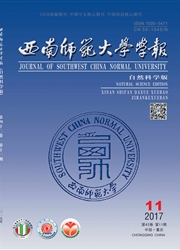

 中文摘要:
中文摘要:
把同阶的子群看作一类,并用n(G)表示G的同阶子群个数的集合.通过数量分析对n(G)={1,m}的幂零群进行了分类,完善了相关工作,得到了相关结果:如果G为有限幂零群且n(G)={l,m},那么G=H×P,这里H为G的循环正规Hall子群,P为G的sylow p-子群.另外,下面结论之一成立:1)m=1+P,P同构于Cpn-1×Cp,Q8,M(n-1,1)(除D8)中的某一个,这里M(n-1,1)=〈a,b|a^p^n-1=b^p=1,a^b=a^1+p^n-2〉;2)m=1,p+p^2,尸同构于Cp×Cp×Cp,M(2,1)*Cp2中的某一个,这里“*”表示中心积,M(2,1)=〈a,b|^p^2=b^p=1,a^b=a^1+p〉.
 英文摘要:
英文摘要:
Subgroups with the same order are seen as one class. Let n(G) be the set of the number of subgroups with the same order. This paper classify the nilpotent groups with n(G) = {1, m} by the analysis of quantity. And this work perfects the existing result. The main result is as following: if G is a finite nilpotent group and n(G) = {1, m}, then G = H x P, where H is the cyclic normal Hall-subgroup of G and P is the Sylow p-subgroup of G. Moreover, one of the following statements holds: 1 ) m = 1 + p, P is one of the following groups: Cpn-1×Cp,Q8,M(n-1,1) except Ds, whereM(n-1,1)=〈a,b|a^p^n-1=b^p=1,a^b=a^1+p^n-2〉;2)m=1,p+p^2, P is one of the following groups: Cp×Cp×Cp,M(2,1)*Cp2, where "*" denotes the central product and M(2,1)=〈a,b|^p^2=b^p=1,a^b=a^1+p〉.
 同期刊论文项目
同期刊论文项目
 同项目期刊论文
同项目期刊论文
 期刊信息
期刊信息
